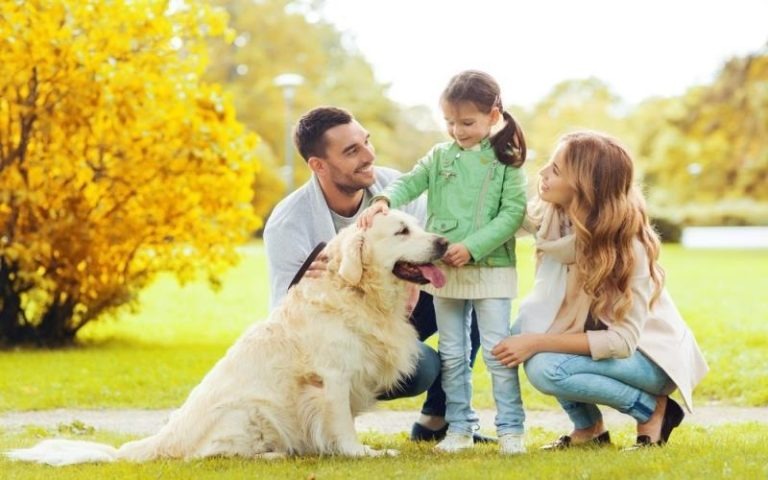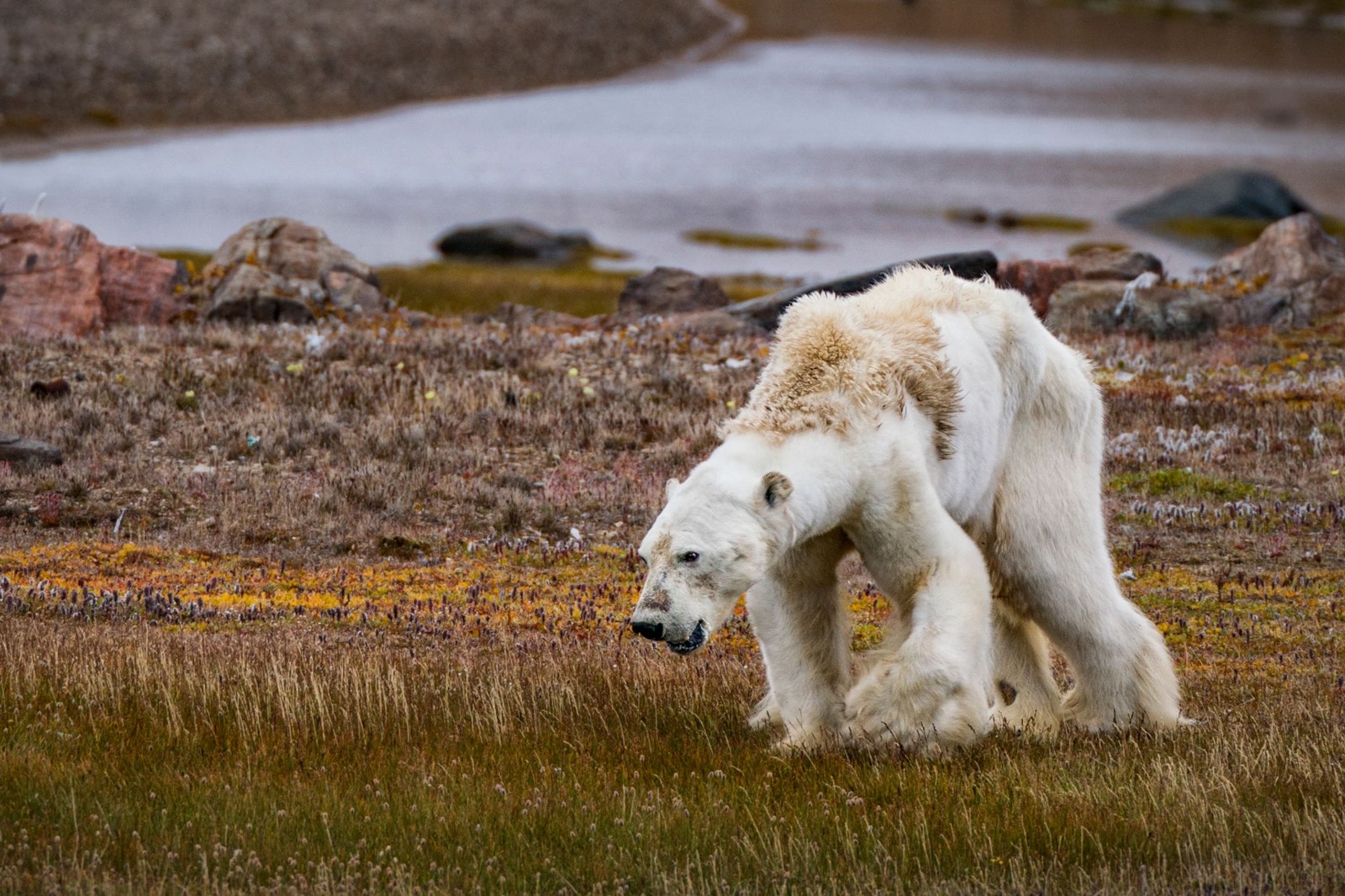
The Psychology of Rescue Pets: Healing from Trauma.
Rescue pets often arrive with invisible emotional scars from neglect, abuse, or abandonment, which profoundly affect their behavior, trust, and ability to bond. Understanding their psychology and the impact of trauma reveals how patience, empathy, and consistent care can guide these animals toward healing. This journey not only transforms the pets but also enriches the emotional lives of their human caregivers.
🐶 Pet Star
54 min read · 19, Oct 2025

Introduction: The Hidden Wounds of Rescue Pets
When we adopt a rescue pet, we aren’t just bringing home an animal—we’re welcoming a survivor. Behind their wagging tails or wary eyes lies a story often marked by hardship: neglect, abandonment, abuse, or prolonged confinement. These experiences shape their behavior, altering their emotional responses and ability to trust. The psychology of rescue pets offers a window into how trauma manifests in animals and how compassion, structure, and care can guide their journey toward healing.
Rescue pets—whether dogs, cats, or other domestic animals—often endure emotional scars similar to post-traumatic stress disorder (PTSD) in humans. Their trauma may result from direct physical harm, emotional deprivation, or long-term neglect. The good news is that recovery is possible. Through time, consistency, and love, these animals can rebuild trust and find emotional stability in their new homes.
1. Understanding Trauma in Rescue Pets
What Is Trauma in Animals?
Trauma, in the psychological sense, occurs when an animal experiences overwhelming fear, pain, or stress beyond its ability to cope. In rescue pets, trauma is not just a single event but often a prolonged experience—being tied outside without food, trapped in a small cage, or abandoned by the only humans they trusted.
Animals internalize trauma in ways that affect their behavior and physiology. Studies show that chronic stress can alter brain chemistry, especially in the amygdala and hypothalamus, which regulate fear and anxiety. In rescue pets, this can manifest as hypervigilance, aggression, withdrawal, or repetitive behaviors such as pacing or self-licking.
Types of Trauma
Rescue pets may suffer from:
- Physical trauma: Resulting from injury, abuse, or neglect.
- Emotional trauma: Stemming from fear, isolation, or sudden loss of a caregiver.
- Environmental trauma: Caused by instability—frequent relocations, noisy shelters, or chaotic environments.
Each type affects the pet’s sense of safety, shaping how it interacts with humans and other animals.
2. The Behavioral Signs of Trauma
Trauma doesn’t always announce itself loudly—it can whisper through subtle changes in behavior. Recognizing these signs is essential for healing:
Common Indicators Include:
- Fear-based reactions: Trembling, hiding, excessive barking, or biting when approached.
- Aggression: Defensive aggression triggered by perceived threats.
- Avoidance: Shying away from touch, eye contact, or unfamiliar environments.
- Depression or lethargy: Lack of interest in food, toys, or social interaction.
- Compulsive behaviors: Licking, chewing, or pacing as self-soothing mechanisms.
- Hypervigilance: Constant scanning of surroundings or startling easily.
Each of these behaviors signals an underlying psychological imbalance. Understanding that these responses are protective mechanisms—not “bad behavior”—is key to compassionate rehabilitation.
3. The Science Behind Healing: How Rescue Pets Recover Emotionally
Healing from trauma in animals is a complex neuropsychological process involving both brain chemistry and emotional conditioning.
a. Neuroplasticity and Recovery
The animal brain, much like the human brain, is remarkably adaptable. Through consistent positive experiences, rescue pets can literally rewire their neural pathways. Positive reinforcement—gentle voices, predictable routines, affection, and treats—helps reduce cortisol (the stress hormone) and increase oxytocin (the bonding hormone). Over time, this chemistry shift builds emotional resilience.
b. The Power of Routine
Consistency creates a sense of security. Rescue pets who once lived in chaos or unpredictability benefit immensely from stable feeding times, walks, and resting spaces. Predictability signals safety, helping to reduce anxiety and restore confidence.
c. The Role of Human Empathy
Research in animal psychology emphasizes the emotional synchronicity between pets and their owners. When caregivers display calm, patient, and empathetic behavior, animals mirror these emotional states. Emotional contagion—an unconscious sharing of moods—plays a vital role in recovery.
4. Human-Animal Bond: A Two-Way Healing Process
The relationship between humans and rescue animals is not one-sided. Just as the pet heals from trauma, the human caregiver often experiences profound emotional growth.
a. Emotional Reciprocity
Adopting a rescue pet often teaches empathy, patience, and mindfulness. Watching an animal slowly trust again—after knowing only fear—can be transformative. For many adopters, it becomes a deeply healing journey, especially for those who’ve faced their own emotional struggles.
b. Therapeutic Benefits
Scientific studies show that caring for rescue animals can:
- Lower stress and blood pressure in humans.
- Release oxytocin, promoting feelings of love and bonding.
- Reduce loneliness and improve mental health.
This symbiotic healing highlights the incredible emotional intelligence shared between species.
5. Rehabilitation Strategies: Helping Rescue Pets Heal
Healing a traumatized pet requires patience, understanding, and evidence-based care.
a. Establish Safety First
Before any training or behavior correction, the animal must feel safe. This involves:
- Providing a quiet, comfortable space.
- Avoiding loud noises or sudden movements.
- Allowing the pet to approach on its own terms.
b. Positive Reinforcement
Rewards-based training replaces fear with trust. Treats, praise, and affection help create new associations—teaching the pet that humans can be sources of joy, not pain.
c. Slow Socialization
Gradually introducing the pet to new environments, people, and other animals prevents overwhelm. Controlled exposure builds confidence over time.
d. Professional Support
Animal behaviorists and veterinarians specializing in trauma can provide tailored programs, including:
- Desensitization and counter-conditioning therapy.
- Medication (in extreme anxiety cases).
- Behavioral modification techniques.
e. Exercise and Play
Physical activity releases endorphins, improving mood and reducing anxiety. Play is also a natural bonding tool that promotes trust.
6. Common Challenges and How to Overcome Them
1. Fear of Abandonment
Rescue pets often fear being left alone. Solution: Gradual desensitization—short departures, calm returns, and creating positive associations with solitude (treats, toys).
2. Aggression from Fear
Avoid confrontation or punishment. Use redirection, patience, and professional guidance to manage triggers.
3. House Training Regression
Stress can cause behavioral setbacks. Consistency and gentle correction—not scolding—help restore habits.
4. Lack of Trust
Trust builds slowly. Eye contact, gentle touch, and routine communication (even talking softly) reinforce safety.
Every step forward, however small, marks a milestone in the pet’s emotional journey.
7. Real-Life Stories of Transformation
Case 1: Luna the Greyhound
Rescued from a racing track, Luna was terrified of humans and refused food for days. Through daily routine, soft music, and gradual hand-feeding, she began to trust her owner. Within months, Luna transformed into a playful, affectionate companion—proof that love rewires even the deepest fear.
Case 2: Milo the Cat
Found abandoned and emaciated, Milo would hiss and hide for weeks. His caregiver respected his space and used scent association—placing worn clothing near his bed. Eventually, Milo associated the scent with safety and began seeking affection, healing through patient exposure.
These stories highlight the universal truth: time, empathy, and consistency rebuild even the most broken spirits.
8. Preventing Re-Traumatization
While recovery is possible, maintaining emotional stability is equally important.
Do’s:
- Maintain consistent daily routines.
- Reward positive behavior regularly.
- Continue gentle training and playtime.
Don’ts:
- Avoid shouting, punishment, or forced interactions.
- Don’t expose pets to chaotic environments too soon.
- Never rush the healing process.
Healing is not linear—it ebbs and flows. But every moment of progress strengthens the bond between pet and human.
9. The Ethical Perspective: Responsibility of Adopters and Shelters
Rescue work involves ethical responsibility. Shelters must assess behavioral health and provide pre-adoption counseling. Adopters, in turn, must commit to understanding trauma recovery—not expecting instant affection or obedience.
By treating rescue animals not as projects but as sentient beings deserving respect, society takes a moral step toward compassion-driven coexistence.
Rescue pets are among the most remarkable survivors in the animal world, embodying a quiet strength born from hardship, neglect, or cruelty. When we adopt a rescue animal, we welcome not just a companion but a being with a history—often marked by trauma, fear, or uncertainty. Many rescue animals have endured prolonged stress, such as abandonment, starvation, harsh confinement, or physical abuse, experiences that profoundly alter their emotional landscape. Like humans, animals possess complex nervous systems capable of processing fear, attachment, and memory. When subjected to trauma, their brains respond by heightening fear responses and altering behavior patterns. The amygdala—the brain’s fear center—becomes overactive, causing exaggerated startle reactions or defensive aggression, while elevated cortisol levels from chronic stress suppress trust and curiosity. In this altered state, a rescue pet might tremble at sudden sounds, withdraw from touch, or react aggressively when cornered, not out of defiance but from deep-seated fear. These behaviors are the animal’s way of protecting itself, a biological defense mechanism developed from survival rather than malice. The first step to helping a traumatized animal is recognizing that these responses are rooted in fear, not disobedience. Compassionate care requires patience and understanding that healing cannot be rushed—it must unfold naturally, with the animal setting the pace. Creating a stable and predictable environment is crucial: regular feeding schedules, consistent walking routines, and a quiet resting area signal safety and reliability. Over time, these consistent cues help the animal’s nervous system calm down, gradually replacing fear with security. Science shows that animals, much like humans, experience neuroplasticity—the brain’s ability to rewire itself through positive experiences. Each gentle gesture, soft voice, and moment of trust helps rebuild these neural pathways, reducing the chemical markers of stress and releasing oxytocin, the hormone associated with love and bonding. The role of human empathy is central to this transformation. Animals are highly attuned to human emotions; they sense tension, calmness, and affection through tone, posture, and scent. When a caregiver exhibits calm, consistent, and patient behavior, the pet begins to mirror those emotional states, learning that humans can be a source of safety rather than fear. This emotional reciprocity leads to mutual healing: as the pet learns to trust again, the human often experiences a deep sense of purpose, compassion, and emotional connection. Indeed, many adopters report that helping a fearful animal regain confidence becomes a therapeutic journey for themselves as well. The process of rehabilitation involves gradual exposure and positive reinforcement rather than punishment or dominance. Rewarding small steps—such as approaching voluntarily, eating from a hand, or tolerating gentle touch—helps the pet form new, positive associations. This technique, called counter-conditioning, retrains the animal’s brain to link formerly frightening stimuli (like a raised hand or loud noise) with safety and pleasure. For example, a rescue dog terrified of leashes may initially freeze or growl; through patient exposure, using treats and praise, the dog eventually learns that the leash predicts something joyful—a walk, play, or affection. Similarly, cats recovering from trauma may require quiet environments and slow desensitization to touch, progressing at their own comfort level. Professional animal behaviorists often play a crucial role in extreme cases, using desensitization techniques, behavioral therapy, or medication to manage anxiety. But the most powerful healer remains human kindness. The journey, however, is not without challenges. Some pets develop fear-based aggression, separation anxiety, or regressive behaviors like indoor accidents. Scolding or forceful correction can undo progress, as it confirms the animal’s belief that humans are unsafe. Instead, patience, redirection, and positive reinforcement work best. The road to recovery can take months or even years, but progress—no matter how small—is profound: a wagging tail after months of avoidance, a cat curling up for the first time, or a once-fearful animal greeting its owner joyfully. These are not just behavioral milestones—they are emotional breakthroughs. The transformation of a traumatized pet into a confident, loving companion is a testament to resilience and trust. Scientifically, this healing mirrors the process of trauma recovery in humans: emotional safety, predictability, and nurturing relationships are the foundation. For both species, love changes the brain—it softens fear, stabilizes emotions, and restores balance. Real-life stories abound: dogs rescued from fighting rings who become therapy animals, cats once feral who now sleep peacefully in laps. These transformations demonstrate that trauma may shape behavior, but it does not define destiny. Every rescue pet carries within it a capacity for renewal; it only needs the right environment to bloom. From an ethical perspective, adopting a rescue pet is not merely an act of kindness—it’s a moral responsibility. Shelters and adopters must recognize that these animals are sentient beings, not rehabilitation projects. They deserve patience, empathy, and lifelong commitment. When we choose to care for a traumatized animal, we become part of its healing narrative, rewriting its story from fear to trust. In turn, we learn invaluable lessons about forgiveness, resilience, and unconditional love. The relationship between human and animal becomes symbiotic: the pet finds safety and affection, while the human discovers a deeper emotional connection and often, healing of their own unseen wounds. As time passes, the fearful glances fade, replaced by relaxed eyes and wagging tails—a silent thank-you for understanding what words could never convey. Ultimately, the psychology of rescue pets teaches us that love, trust, and patience can mend even the deepest scars. Healing a traumatized pet is not just about correcting behavior—it’s about rebuilding a soul. And when that soul heals, it reflects back the beauty of compassion, reminding us that every act of empathy creates ripples of recovery that extend far beyond one life.
When a person adopts a rescue pet, they are not merely giving a home to an animal; they are welcoming a soul that has survived trauma, neglect, or abandonment. These animals, whether dogs, cats, or others, often come from harsh environments—abusive homes, streets, puppy mills, or overcrowded shelters—where they have endured prolonged fear, hunger, and loneliness. The psychological impact of such experiences can be profound, shaping their emotions, behavior, and ability to trust. Much like humans, animals have complex emotional systems; they feel fear, joy, anxiety, and attachment through the same hormonal and neurological mechanisms. When subjected to trauma, their brains undergo changes similar to post-traumatic stress disorder (PTSD) in humans: the amygdala becomes overactive, keeping them in constant survival mode, while elevated cortisol levels from chronic stress suppress immune function, disrupt sleep, and hinder emotional balance. A rescue pet who once faced violence or neglect may tremble at sudden noises, recoil from touch, or show aggression—not because it is “bad” or “disobedient,” but because it is frightened. These behaviors are defense mechanisms, the animal’s way of protecting itself from perceived threats. Understanding this distinction is the cornerstone of compassionate rehabilitation. The journey toward healing begins with creating a sense of safety, for without safety, no creature—human or animal—can heal. Consistent routines, gentle tones, predictable feeding schedules, and quiet environments all communicate security. Over time, this structure teaches the pet that life is no longer unpredictable or dangerous. Scientific research supports this: animals have the capacity for neuroplasticity, meaning their brains can form new connections based on positive experiences. Each act of kindness—every gentle pat, calm word, and patient moment—helps rewrite their neural map, reducing fear and increasing oxytocin, the hormone of love and bonding. It is in these small, consistent acts that trust begins to grow. However, recovery is rarely linear. Rescue pets often exhibit setbacks, alternating between moments of affection and retreat. A dog may allow petting one day and hide under the bed the next; a cat might purr during feeding but lash out if startled. These fluctuations are not signs of failure but of progress—proof that the pet is trying to navigate its new world. Patience is therefore the greatest gift a rescuer can give. Positive reinforcement is the most effective training approach: rewarding calm or confident behavior with treats, affection, or playtime reinforces the idea that good things follow good choices. Conversely, punishment or harsh corrections can retrigger fear, undoing weeks of progress. Trauma cannot be “trained out” of an animal; it must be loved out, slowly, through gentle consistency. The process of healing also highlights the emotional reciprocity between pets and humans. Studies show that interacting with animals lowers human stress, reduces blood pressure, and releases endorphins. For people who themselves have experienced loss or trauma, helping a frightened pet recover can be deeply therapeutic. It creates a cycle of healing—each comforting the other, each reminding the other that trust and love are still possible. This mutual recovery explains why so many rescue pet adopters describe their relationship as “life-changing.” The bond formed through shared vulnerability becomes unbreakable. Still, the road to healing is paved with challenges. Many rescue pets suffer from separation anxiety, hypervigilance, or fear-based aggression. A common issue is the “fear of abandonment,” where pets panic when left alone, pacing, whining, or destroying furniture. The key is gradual desensitization—short separations, calm departures, and positive distractions like toys or treats—to teach them that the human always returns. Similarly, aggression stemming from fear must be addressed with care, not dominance. Professional behaviorists often employ desensitization and counter-conditioning, slowly pairing triggers (like strangers or loud sounds) with positive outcomes to reshape the animal’s response. Physical activity and play also play vital roles in recovery. Exercise releases endorphins that reduce anxiety and build confidence, while play strengthens the bond between pet and caregiver, replacing fear with joy. Nutrition, too, influences behavior; a healthy diet supports brain chemistry, stabilizing mood and energy levels. In cases of severe trauma, veterinarians may recommend medication to manage anxiety, but this should always complement—not replace—emotional rehabilitation. Real-life examples reveal how resilient rescue animals can be. A greyhound rescued from a racing track may cower from loud noises but, after months of gentle walks and consistent affection, learns to wag its tail again. A cat once abandoned on the streets may hide for weeks before daring to sit beside its owner, eyes half-closed in trust. Each story is a testament to the power of compassion and patience. These transformations teach us a vital truth: trauma does not define an animal’s destiny. Love can rebuild what fear has broken. Yet, adopting a rescue pet comes with ethical responsibility. It is not an act of charity but a lifelong commitment. Adopters must educate themselves about trauma recovery, resist unrealistic expectations, and accept that healing takes time. Shelters, too, play a crucial role by assessing animals’ psychological needs, providing basic training, and preparing adopters for potential challenges. Society must move away from viewing rescue pets as “damaged goods” and instead see them as survivors deserving understanding and respect. In doing so, we redefine what it means to care—not just for animals, but for all beings who have suffered. Ultimately, the psychology of rescue pets mirrors our own emotional truths. We all crave safety, stability, and love. When a traumatized pet learns to trust again, it reflects humanity’s capacity for empathy and transformation. Their journey from fear to affection reminds us that healing, whether in an animal or a person, is not about erasing the past—it’s about creating a new present grounded in care, patience, and hope. Every rescue pet that learns to wag its tail again tells the same story: love is the most powerful therapy of all.
Conclusion
Rescue pets are living testaments to resilience. Though their pasts are often marked by suffering, their capacity to heal—and to love again—is extraordinary. Understanding the psychology of trauma in animals helps caregivers create safe, nurturing environments that promote recovery.
Healing begins with trust. Through empathy, routine, and unconditional love, humans help these animals rebuild their sense of security, while also enriching their own emotional lives. Adopting a rescue pet is not just an act of kindness—it is a shared journey of healing, hope, and rediscovery.
Q&A Section
Q1: What are the most common signs of trauma in rescue pets?
Ans: Fearfulness, avoidance, aggression, excessive barking, hiding, and compulsive behaviors like licking or pacing are typical indicators of trauma in rescue animals.
Q2: Can rescue pets fully recover from their traumatic pasts?
Ans: Yes, with consistent love, patience, and positive reinforcement, most rescue pets can rebuild trust and lead emotionally stable, happy lives.
Q3: How long does it take for a rescue pet to adjust to a new home?
Ans: Adjustment time varies by animal and trauma level. Some may show improvement within weeks, while others may take months or even years to fully trust and relax.
Q4: Should traumatized pets be disciplined for bad behavior?
Ans: No. Punishment worsens fear. Instead, use positive reinforcement to reward calm and desired behaviors, gradually reshaping their responses.
Q5: When should a professional behaviorist be consulted?
Ans: If a rescue pet displays severe aggression, persistent fear, or self-harming behavior despite consistent care, professional behavioral therapy or veterinary intervention is recommended.
Similar Articles
Find more relatable content in similar Articles

Sustainable Pet Products: What to Look for in 2025...
As sustainability becomes a ce.. Read More

How Pets Strengthen Family Bonds...
Pets are more than just compan.. Read More

Smart Homes for Pets: Automated Feeders, Doors, and Mo..
As smart home technology advan.. Read More

How Climate Change Affects Wild and Domestic Animals...
Climate change is dramatically.. Read More
Explore Other Categories
© 2024 Copyrights by rPets. All Rights Reserved.